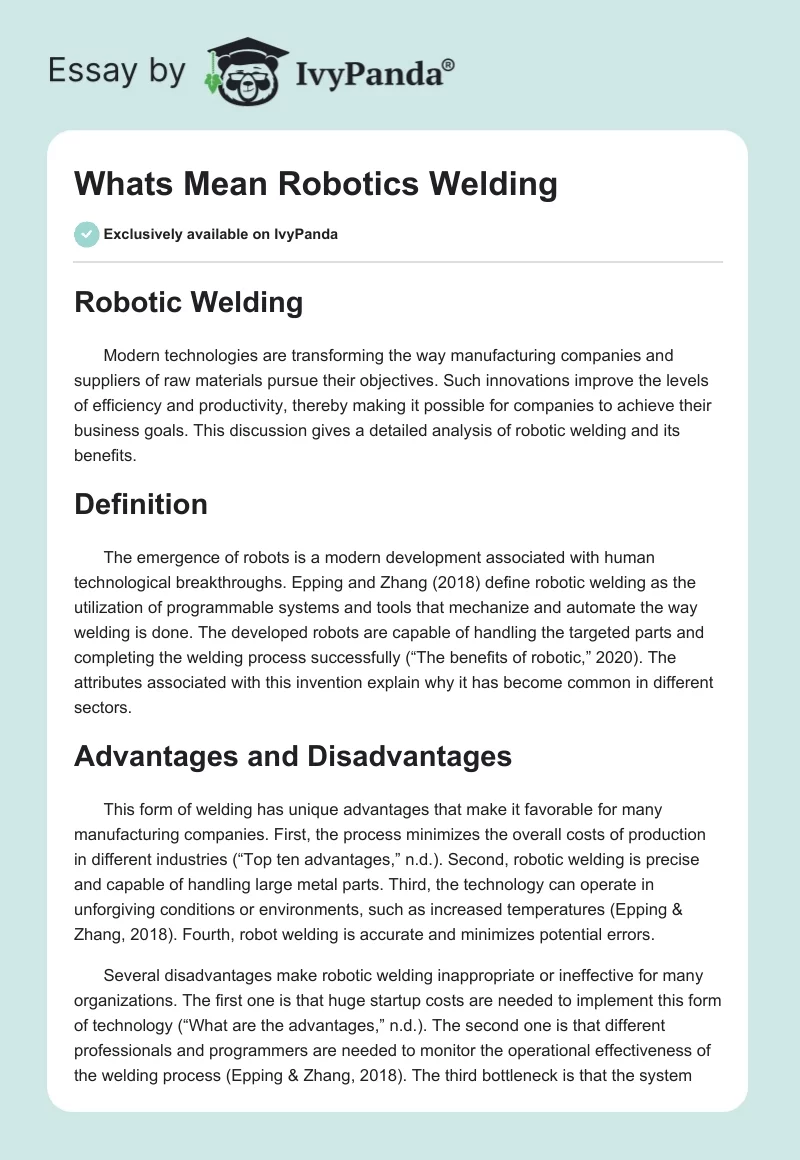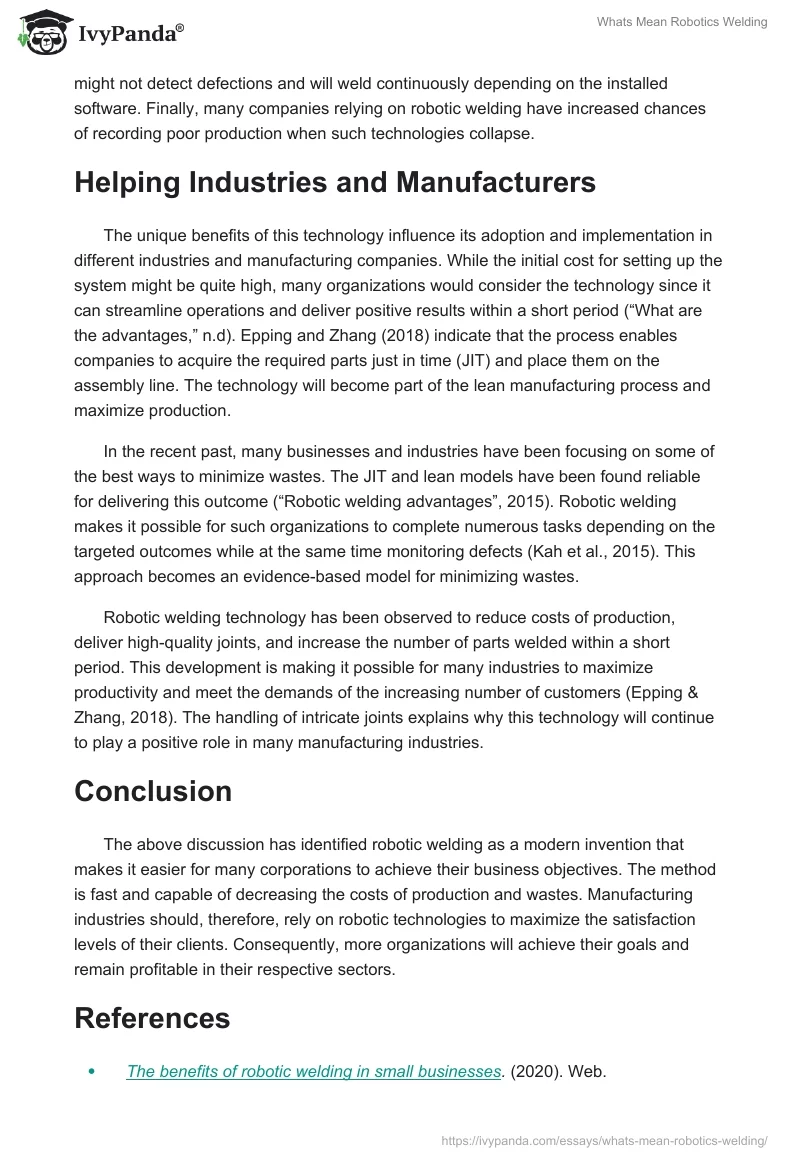Robotic Welding
Modern technologies are transforming the way manufacturing companies and suppliers of raw materials pursue their objectives. Such innovations improve the levels of efficiency and productivity, thereby making it possible for companies to achieve their business goals. This discussion gives a detailed analysis of robotic welding and its benefits.
Definition
The emergence of robots is a modern development associated with human technological breakthroughs. Epping and Zhang (2018) define robotic welding as the utilization of programmable systems and tools that mechanize and automate the way welding is done. The developed robots are capable of handling the targeted parts and completing the welding process successfully (“The benefits of robotic,” 2020). The attributes associated with this invention explain why it has become common in different sectors.
Advantages and Disadvantages
This form of welding has unique advantages that make it favorable for many manufacturing companies. First, the process minimizes the overall costs of production in different industries (“Top ten advantages,” n.d.). Second, robotic welding is precise and capable of handling large metal parts. Third, the technology can operate in unforgiving conditions or environments, such as increased temperatures (Epping & Zhang, 2018). Fourth, robot welding is accurate and minimizes potential errors.
Several disadvantages make robotic welding inappropriate or ineffective for many organizations. The first one is that huge startup costs are needed to implement this form of technology (“What are the advantages,” n.d.). The second one is that different professionals and programmers are needed to monitor the operational effectiveness of the welding process (Epping & Zhang, 2018). The third bottleneck is that the system might not detect defections and will weld continuously depending on the installed software. Finally, many companies relying on robotic welding have increased chances of recording poor production when such technologies collapse.
Helping Industries and Manufacturers
The unique benefits of this technology influence its adoption and implementation in different industries and manufacturing companies. While the initial cost for setting up the system might be quite high, many organizations would consider the technology since it can streamline operations and deliver positive results within a short period (“What are the advantages,” n.d). Epping and Zhang (2018) indicate that the process enables companies to acquire the required parts just in time (JIT) and place them on the assembly line. The technology will become part of the lean manufacturing process and maximize production.
In the recent past, many businesses and industries have been focusing on some of the best ways to minimize wastes. The JIT and lean models have been found reliable for delivering this outcome (“Robotic welding advantages”, 2015). Robotic welding makes it possible for such organizations to complete numerous tasks depending on the targeted outcomes while at the same time monitoring defects (Kah et al., 2015). This approach becomes an evidence-based model for minimizing wastes.
Robotic welding technology has been observed to reduce costs of production, deliver high-quality joints, and increase the number of parts welded within a short period. This development is making it possible for many industries to maximize productivity and meet the demands of the increasing number of customers (Epping & Zhang, 2018). The handling of intricate joints explains why this technology will continue to play a positive role in many manufacturing industries.
Conclusion
The above discussion has identified robotic welding as a modern invention that makes it easier for many corporations to achieve their business objectives. The method is fast and capable of decreasing the costs of production and wastes. Manufacturing industries should, therefore, rely on robotic technologies to maximize the satisfaction levels of their clients. Consequently, more organizations will achieve their goals and remain profitable in their respective sectors.
References
- The benefits of robotic welding in small businesses. (2020). Web.
- Epping, K., & Zhang, H. (2018). A sustainable decision-making framework for transitioning to robotic welding for small and medium manufacturers. Sustainability, 10(10), 3651-3668. Web.
- Kah, P., Shrestha, M., Hiltunen, E., & Martikainen, J. (2015). Robotic arc welding sensors and programming in industrial applications. International Journal of Mechanical and Materials Engineering, 10(13). Web.
- Robotic welding advantages. (2015). Web.
- Top ten advantages of robotic welding. (n.d.). Web.
- What are the advantages of robot welding over manual welding? (n.d.). Web.


